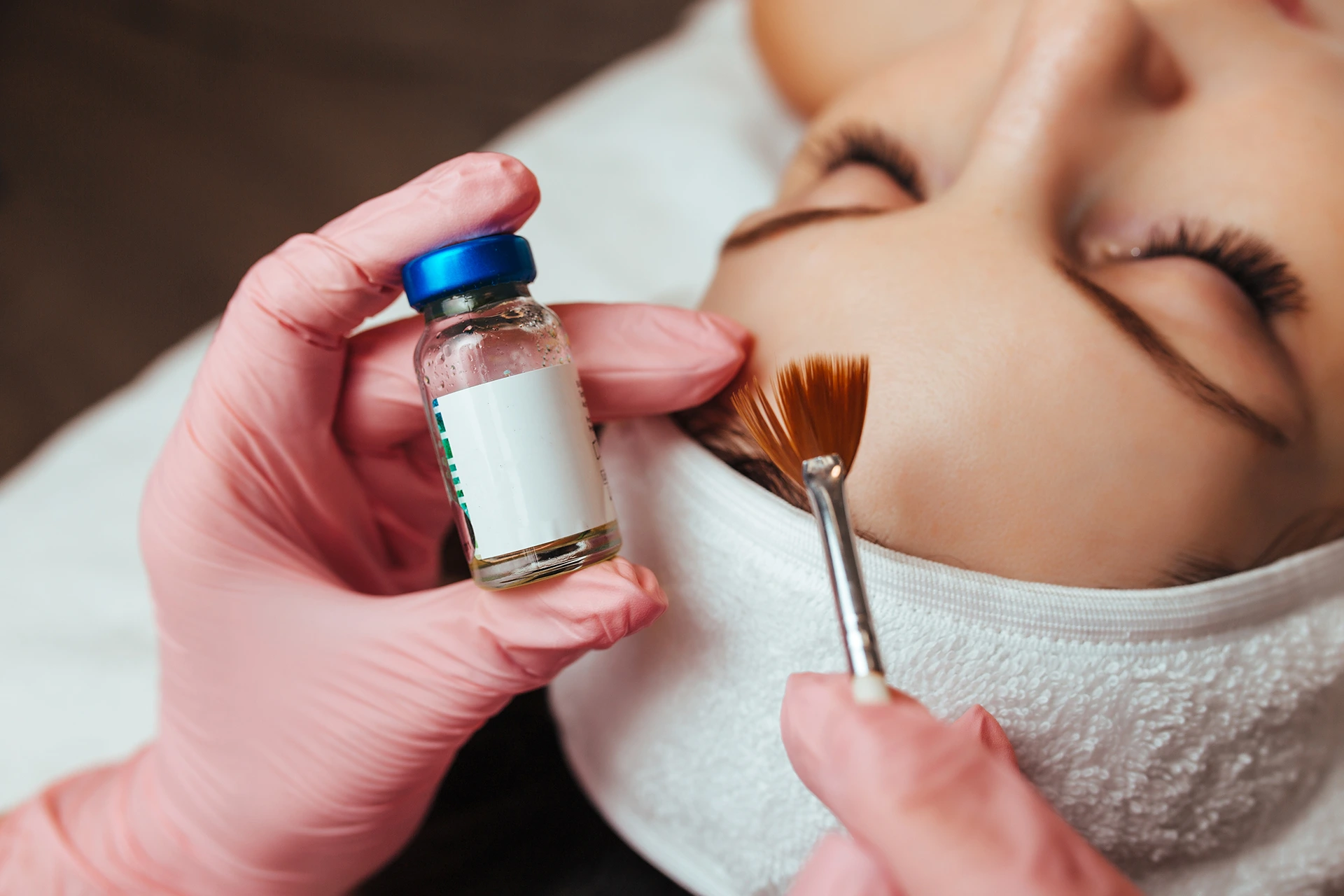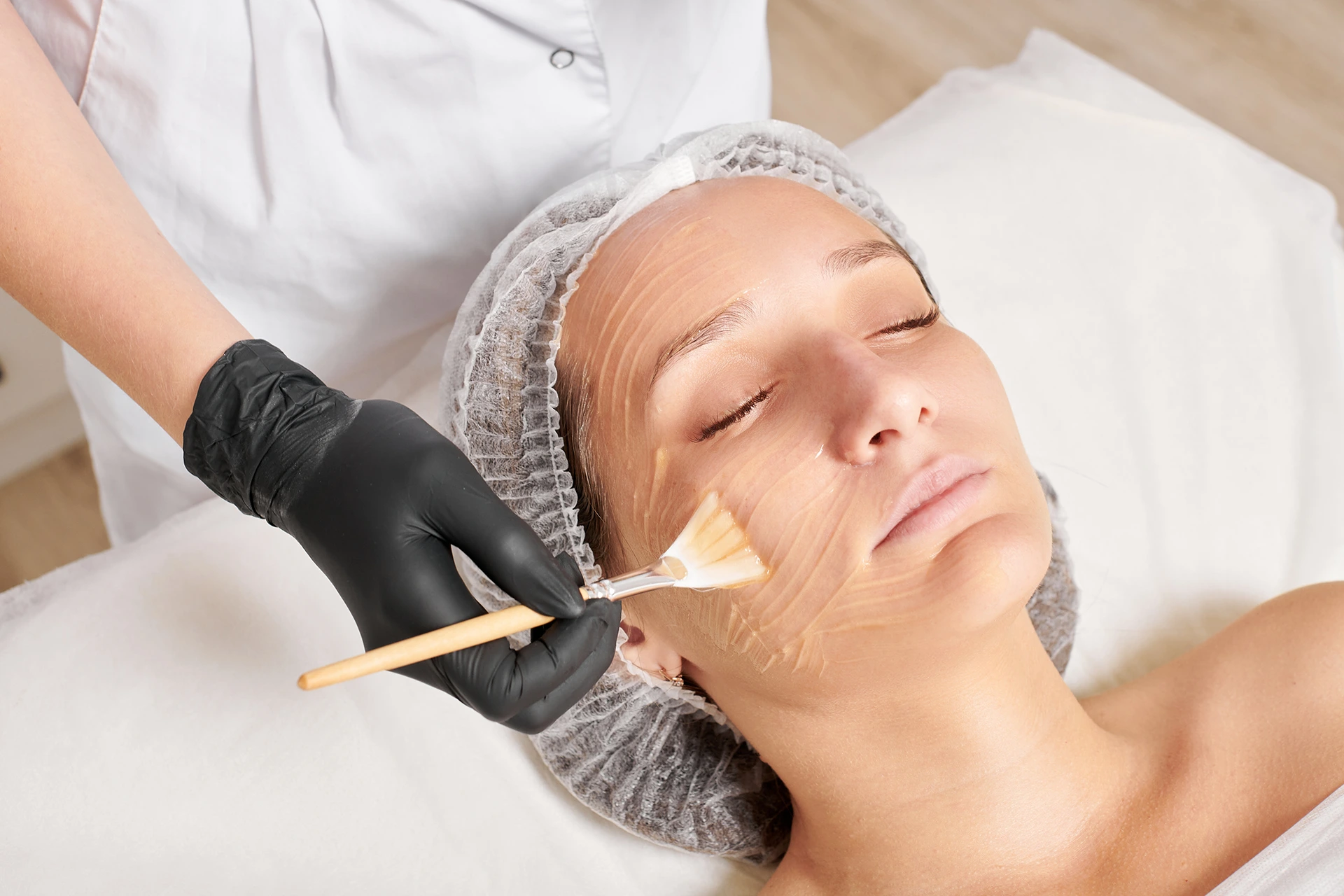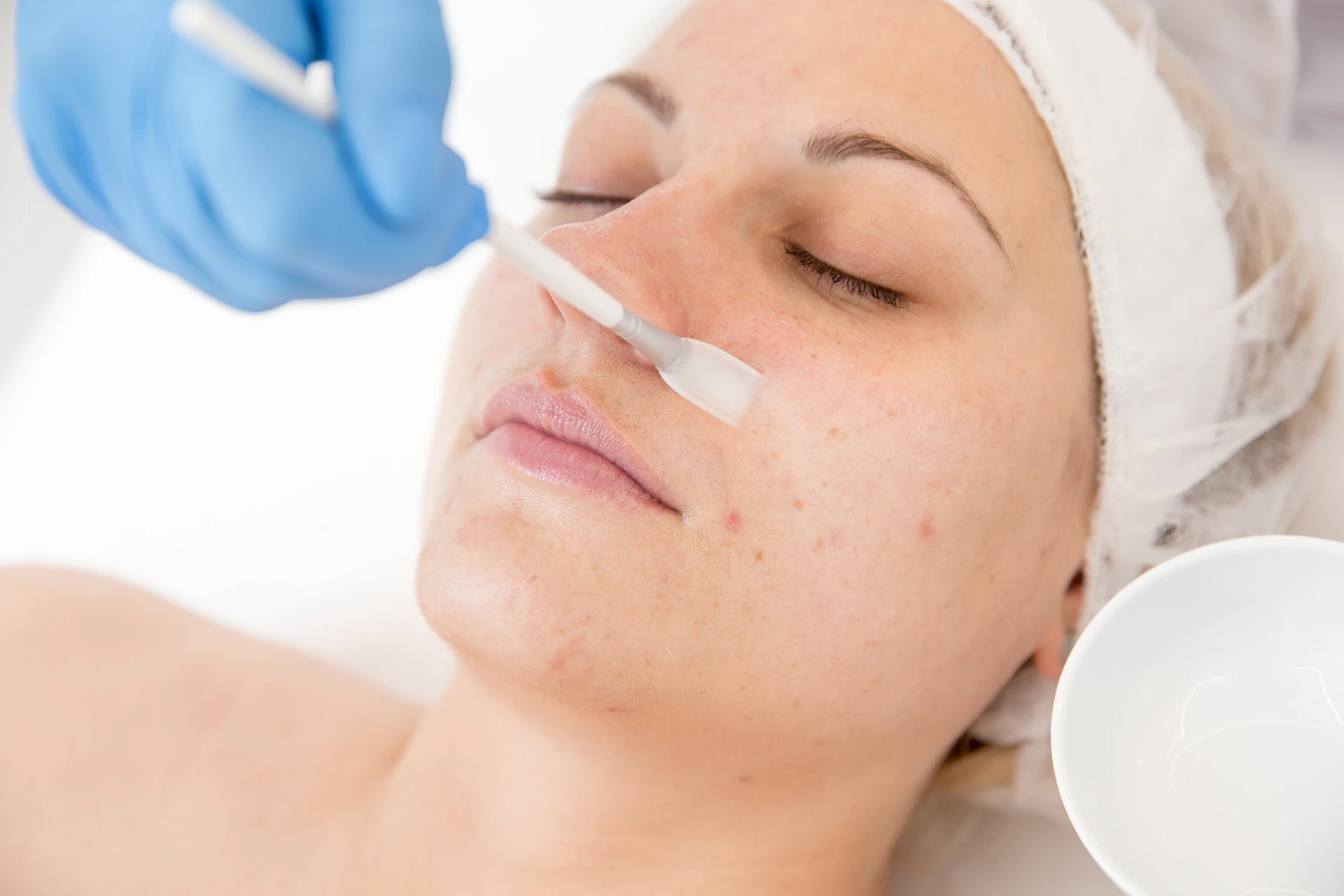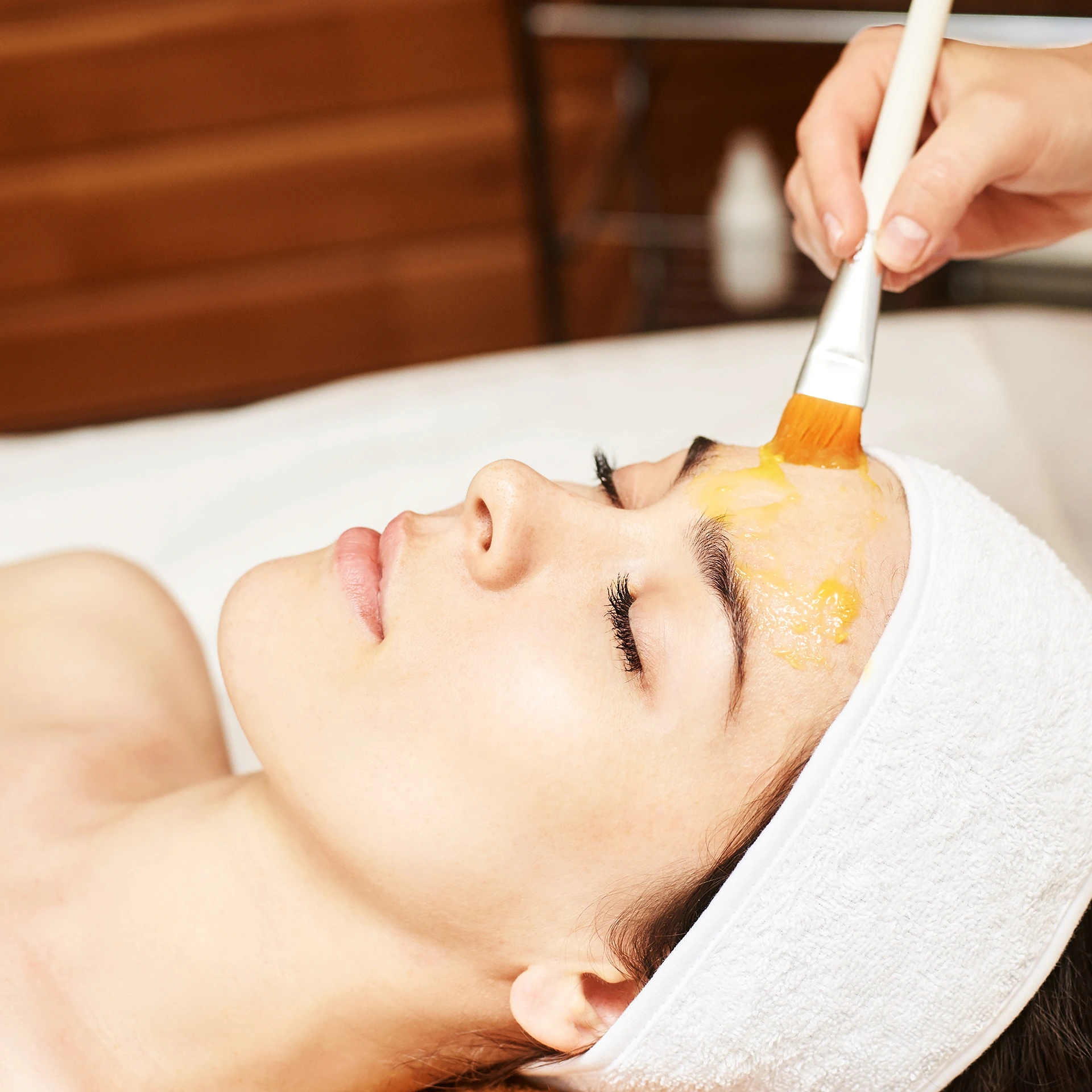Introduction to Deep Chemical Peels
What most people don’t know is that the concept of chemical peels have been around for thousands of years.
Peeling procedures were described in Egyptian medicine in the Ebers papyrus as early as 1550 BC.
Fast forward more than three thousand years later, in Vienna, renowned physician and dermatologist Ferdinand von Hebra pioneered the use of deep chemical peels to treat conditions such as melasma and Addison’s disease.
Today, deep chemical peels play a crucial role in many cosmetic and aesthetic applications. These procedures help people renew and rejuvenate their skin, and achieve a fresher, more youthful appearance. Deep peels are also known to significantly improve certain skin concerns.
Let’s get started by understanding exactly how these powerful treatments work.
How Do Deep Chemical Peels Work? The Science Explained
There are actually three main depth categories of chemical peels:
- Light peels: Also called superficial peels, these treatments remove only the outermost layer of skin. Light peels use gentle acids like glycolic acid.
- Medium peels: Referred to as medium-depth peels, these penetrate into the epidermis (outer layer) and papillary dermis (upper layer of the deeper skin layer). Trichloroacetic acid (TCA) is commonly used.
- Deep peels: The strongest chemical peels, these penetrate deep into the reticular dermis (the thick, deeper part of the skin). Phenol is the main ingredient.
Here’s a table that shows a quick comparison:
| Peel Depth | Penetration | Skin Concerns Treated | Recovery Time |
| Light Peel | Epidermal layers | Fine lines, dullness, uneven texture | 3-7 days |
| Medium Peel | Mid-dermal layer | Pigmentation, deeper wrinkles | 5-7 days |
| Deep Peel | Deep dermal layer | Severe photoaging, deep wrinkles and scars | deep wrinkles and scars 10-21 days |
The deeper the chemical peel, the more dramatic the results in smoothing wrinkles and scars, but the longer the recovery. Light peels require minimal downtime while deep peels involve more intensive wound healing which is why they are reserved for severe cases.
Who Could Benefit From a Deep Chemical Peel?
If you’re dealing with stubborn skin issues like severe wrinkles, acne scars, or uneven skin tone, a deep chemical peel could be an option for you. It’s also beneficial for those wanting to enhance their overall skin texture and appearance, or for people with precancerous skin growths.
Did You Know?
According to a report by the American Society of Plastic Surgeons, chemical peel procedures have seen a 2% increase in 2020, showing more people are turning to this method for their skin rejuvenation needs. This proves the effectiveness and popularity of this procedure!
How Deep Do Deep Peels Penetrate the Skin?
Deep chemical peels are classified as medium-depth to deep, penetrating through the epidermis and into the papillary or reticular dermis. This corresponds to a depth of penetration of 0.5mm to 0.8mm or more into the skin layers.
The epidermis itself consists of 5 sub-layers. Light peels remove the outermost layers including the stratum corneum and stratum granulosum. Medium depth peels reach the stratum spinosum. Deep peels go beyond this into the dermis.
The deepest phenol peels can penetrate all the way to the reticular dermis, where collagen and elastin fibers provide structural support and elasticity to the skin.
So, what makes deep peels different?
A deep chemical peel is a controlled, medical-grade exfoliation technique that uses a strong chemical solution to penetrate into the deeper dermal layers of the skin. This removes damaged outer layers of skin and triggers regeneration of new cells and collagen deep within the skin.
The chemical solutions used in deep peels include trichloroacetic acid (TCA), glycolic acid, Jessner’s solution, phenol or a combination of these applied in layers. They work by:
- Penetrating and dissolving the bonds between skin cells in the epidermis and dermis
- Removing outer layers of damaged and pigmented skin cells
- Triggering inflammation that stimulates collagen production and dermal remodeling
- Promoting regeneration of smoother, evenly pigmented and less wrinkled skin
Basically, the chemical solution applied to the skin causes a controlled injury to its outermost layers. This triggers the skin to shed the damaged layers and stimulates collagen production and new skin cell growth.
By exfoliating the outermost damaged layers and accelerating cell turnover in the deeper dermis, deep chemical peels improve various skin concerns including:
- Wrinkles and fine lines, especially deeper wrinkles
- Severe sun damage, photoaging and actinic keratoses
- Uneven skin pigmentation and age spots
- Scars from acne, chickenpox or injuries
- Enlarged pores and rough skin texture
The dramatic results of deep peels make them an intensive anti-aging treatment for mature skin showing advanced signs of sun damage.
Deep Peel Benefits: What Skin Concerns Can They Treat?
The powerful exfoliation of a deep chemical peel can improve these common skin concerns:
Wrinkles and Fine Lines
By removing damaged outer layers and triggering collagen production in deeper skin, deep peels can significantly reduce wrinkles and fine lines, especially around the eyes, mouth, and cheeks. They can minimize even deep wrinkles and lines.
Acne Scars
Penetrating deep into the dermis allows deep peels to improve appearance of deep acne scars. They are especially effective for ice pick, boxcar, and rolling scars.
Skin Discoloration and Tone
The shedding and renewal of skin cells evens out skin pigmentation. Deep peels improve age spots, melasma, sun spots, and blotchy skin tones.
Enlarged Pores
By exfoliating pore-clogging debris and stimulating collagen production, deep chemical peels can minimize the appearance of enlarged pores.
Keep in mind results take time to fully see, but dramatic improvement is typical after just one deep peel treatment. Multiple treatments spaced weeks or months apart produce even better results.
What Happens During a Deep Chemical Peel Treatment?
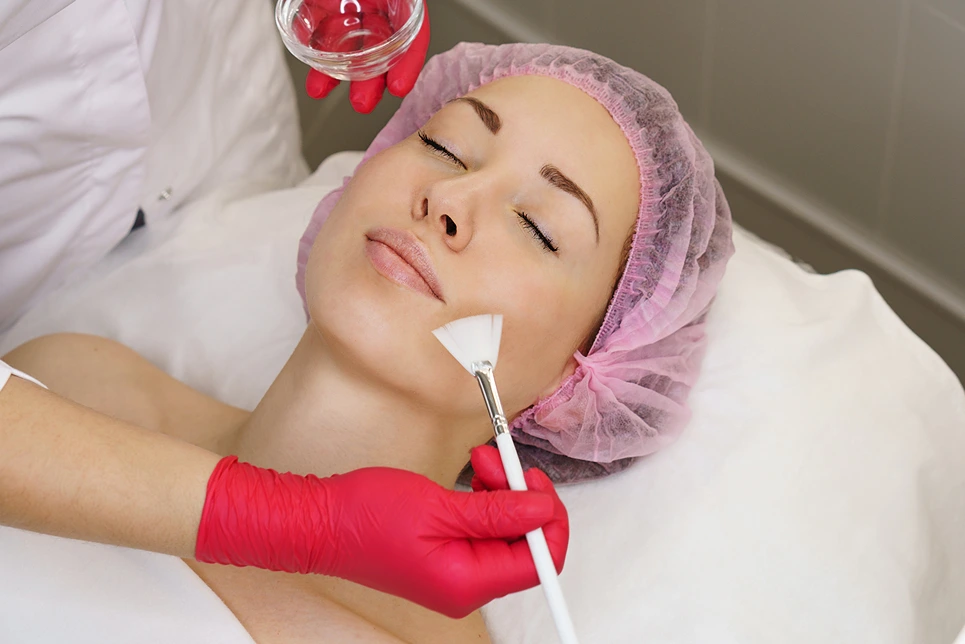
Wondering what a deep chemical peel treatment is actually like? Here’s an overview of the step-by-step process:
Before the Peel
To ensure you get the best results from your deep peel, there are a few key steps you’ll take prior to the procedure:
Avoid sun exposure: Stay out of the sun starting 2 weeks before your peel to prevent further sun damage and ensure even peeling.
Prep your skin: Your dermatologist may prescribe a gentle retinoid cream 2-4 weeks beforehand to thin the skin’s outer layer.
Take antiviral medication: This prevents viral outbreaks that could occur when the skin is damaged. It’s usually taken starting 2 days before.
During the Peel
Here’s what you can expect once you arrive for your peel appointment:
Cleansing: Your face will be thoroughly cleaned and prepped. For a deep peel, you may receive a light sedative.
Apply peel solution: Your dermatologist will apply the phenol solution and leave it on for several minutes to penetrate deep layers of skin. You’ll feel stinging and burning temporarily.
The chemical peel solution is applied using either cotton balls, gauze, or a metal applicator. For deeper peels, the chemicals are applied in successive layers to control penetration to the desired depth.
- Glycolic acid: Applied for 2-5 minutes until even frosting is seen
- TCA peels: Multiple layers of 10-35% concentration
- Phenol: Used at 88% concentration, applied once
During the application, stinging, burning and blanching/whitening of skin are normal sensations. The face may also swell slightly.
Neutralize and remove: After determined amount of time, your provider will apply water or alcohol to stop the peeling action. The solution will be washed off.
Soothing balm: A petroleum-based balm or ointment is applied after to soothe the skin and prevent air contact. This starts the healing process.
The time the phenol solution is left on determines the depth. For the deepest peels, it can be left on for 15 minutes before neutralizing and removing it.
After the Peel
Immediately after your peel, you can expect:
Redness and irritation: Your skin will look sunburned and feel sensitive. Facial swelling is also common. This is temporary.
Oozing and crusting: The damaged skin cells shed, causing oozing and crusting for the first few days. Keep treated areas moist.
Peeling: Within 2-5 days, significant visible peeling occurs. Don’t pick at peeling skin, allow it to shed naturally.
Healing: After about 2 weeks, your skin will have fully healed with fresh new layers revealed.
After the first treatment session, the provider will go over post-peel care instructions:
- Cleanse skin gently, use moisturizer and sunscreen
- Keep treated area clean and moist to promote healing
- Avoid direct sun exposure until skin is fully healed
- Use any prescribed ointments and avoid picking or scrubbing skin
The Bottom Line

Let’s be real – none of us are getting any younger. And while we can’t turn back the clock, there are options to refresh your appearance and start looking as young as you feel. Deep chemical peels are one of the most effective treatments out there to erase years off your skin.
Ready to take the plunge? The skin health pros at CosMedic Laser MD have got your back. Our experienced team knows this powerful procedure inside and out. They’ll give you the real deal on what to expect, hold your hand through the treatment, and ensure you heal up beautifully.
Make the choice to invest in your skin and your confidence. Book a deep chemical peel consultation with CosMedic Laser MD today. You’ll be so glad you did!




